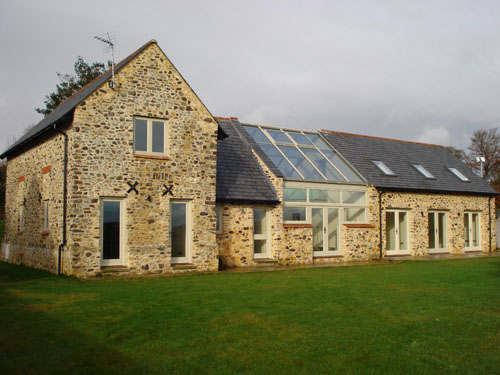

Good architecture is a combination of many elements, and it is best left to clients and architects to debate and decide what is good architecture, but certainly one of those contributing elements is the structure – apart from offering strength, stiffness and stability, in different buildings the structure will take on differing degrees of visual importance – in some buildings the structure will be exposed, while in others it will be hidden behind plasterboard or other cladding, quietly doing its job. I love being able to (literally) support the architectural ideals through my work as a structural engineer. I make no pretence or claim to have in-depth knowledge of architectural styles or history, but I do have an interest in historic buildings, contemporary buildings and everything in-between.
Good design can mean different things depending what is required – it could mean: economic, light-weight, practical to build, innovative, aesthetically satisfying, efficient use of materials, or have good sustainable qualities, and it is likely to be a combination of any of these attributes – it will also probably result from resolving the conflict between some of these.
It can be frustrating having to carry out the engineering 'in-spite of' the architecture - for example, being asked to make a scheme work structurally, after the architect and client have spent weeks or months coming up with a scheme without consulting an engineer on the most practical, or economic or exciting way of creating the scheme. I appreciate that on a 'run-of-the-mill' domestic scheme, there may only be a need for one beam for example, and so a simple bit of functional engineering design suits the occasion, but on a larger scheme, it should be of assistance to have the engineer involved at an early stage, and I aim to give advice that benefits the project at all times.

I have been asked that question by prospective clients on occasions after giving a fee quote for structural engineering services, and it is a reasonable question if you don't understand the role of a structural engineer. I was once criticised by a solicitor client because my survey report was 'a bit light' – the fact was, that there wasn't much wrong with the building to write about, and I don't set about padding out my reports just to make them seem bigger!
The main point to bear in mind in understanding what professional structural engineering services are, is that you are paying for a combination of knowledge, experience, and creative thought – in the case of a structural engineer, these can be briefly explained as follows:
This may take the form of mathematical analysis, and an understanding of the physics of materials, forces and stresses and chemical reactions during the life of a building
While some experience can be passed on or taught by colleagues, lecturers, etc., there is some knowledge which is best gained by seeing actual building behaviour, and this is gained during a building survey – for example, distortions of walls, floors and roofs, that take decades or centuries to occur, the effects of corrosion, decay and insect infestation, or the effects of weather such as expansion, contraction and wind. Laboratory testing can illustrate principles, but every building is unique, as even when 'kit' buildings are assembled in a factory, they will be bearing on unique geology, and facing differing wind and weather aspects, and so subject to different conditions.
Depending on the architectural form of the building, there may be unusual and restrictive conditions on the site, or in the building layout which require creative thought to devise a suitable structural solution i.e a 'good design' as defined in paragraph two above. This cannot easily be measured in terms of time, but when the 'Eureka' moment comes, it might enable a seemingly impossible result to be achievable, or it might save many times the cost of the design thought process in final construction costs.
Depending on the nature of the project, we will produce written calculations, drawings and/or a written report – our fee quotation will also allow for telephone support to answer queries from the client, their architectural designer, the builder and Building Control to clarify details, the principals of the design, or to develop the design.
So, in summary, what a structural engineer can provide is a combination of scientific knowledge, experience and creative thought, finding solutions to problems, or when surveying, finding problems that need solutions, and which cannot necessarily be measured and priced by the number of pages of calculations, or the number of drawings, or the thickness of a report – a professional service is not a physical commodity.